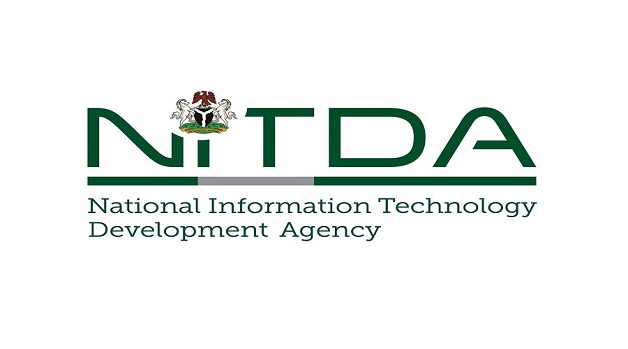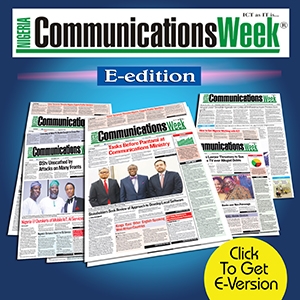Telecom
Rugged Computers are More than Just ‘Hard Shells’

First of all, let us distinguish between a “rugged” computer and a “ruggedized” computer (or tablet or smartphone).
A rugged computer is designed to operate reliably in very harsh environments and conditions. The term “ruggedized” gives the sense that fragile internal components have been somehow protected. Truly rugged devices are not simply wrapped in a tough shell.
Tough and durable mobile computers and smartphones are gaining in popularity – because the customers demand more durable products! – and there are actually some mainstream devices that could be described as ruggedized (and are often advertised as rugged). But they are not truly rugged.
They might be waterproof but lack other aspects of ruggedness, like the ability to withstand vibrations/shocks and function well in extreme temperatures.
Let us briefly recap the definition of ruggedness:
The devices should have passed some of the MIL-STD tests, i. e. the American military standard for equipment.
24 laboratory test methods ensure that the equipment can handle low pressure at high altitudes; exposure to high and low temperatures plus temperature shocks; rain; humidity; sand and dust exposure; leakage; shock and vibration.
• They must be highly rated on the ingress protection (IP) scale for protection against dust and liquids. The ratings are displayed as a 2 digit number.
The first digit reflects the level of protection against dust and the second digit reflects the level of protection against liquids (water). So an IP65 rating, for example, would ensure complete protection against dust and protection against water jets.
Now let us take a closer look on the tests carried out on rugged computers:
Drop and shock testing. This is one of the most important tests for rugged computers, simply because rugged computers are dropped all the time by workers in the logistics, forestry, public transportation, construction, mining, security and other industries where rugged computers are in high demand.
Drop a normal computer and you will easily break the display or the hard drive. Drop a rugged computer and nothing will happen – at least it is highly unlikely that the device will break if it has passed all the relevant tests.
All rugged mobile computers are tested to ensure they can survive falls as well as high-force impacts to the devices’ casings. Drop tests are certified by independent test laboratories and performed in accordance with MIL-STD-810G.
There are eight different procedures to choose from that each use different ways to cause shock or impact.
The “transit drop test” is the most cited. It requires items to survive a total of 26 drops from the height of 122 cm, on each face, edge and corner, onto a hard surface like concrete.
Liquid resistance testing. Mobile field computers are inevitably exposed to rain, spills and splashes. The second number of the IP code describes the liquid ingress protection, i.e. how well the unit is protected against water.
The scale ranges from dripping water to continuous immersion in water. Water resistance tests are often carried out by the manufacturers of rugged computers by exposing the computer to powerful water jets from many directions without harmful effects.
The test duration, water volume and water pressure varies depending on the rating. The water temperature is lower than the device.
Vibration testing. Ordinary mobile computers are sensitive to vibrations and are not built to handle vibrations. Hard drives disks are especially vulnerable when subjected to vibration. Rugged computers, however, must be able to handle vibrations since they are often used in vehicles that travel on bumpy and rough surfaces.
Vibration tests are performed in accordance with MIL-STD-810G. They are designed to determine if a device can withstand the vibrations it would be exposed to during its lifecycle.
The tests use laboratory shakers set to different levels to simulate being on a vehicle or carried by a person, with variations in the vibrations’ wave form, frequency and intensity depending on the type of device and the environment being simulated.
Sand and dust testing. A rugged computer must be able to keep out particles. Almost all field workers are exposed to dust and dirt at some point that would slow key functions and damage components if not protected.
The dust resistance procedure tests ingress of small dust particles. Flour and sand is projected onto the device at high wind speeds and high temperatures for several hours, rotating the device and varying the temperature and wind speed.
The blowing sand resistance procedure is basically the same as the dust test but the test is done in higher wind speed. The high end test simulates being near an aircraft.
Extreme temperature testing. Rugged mobile computers must be able to handle extreme temperatures and wild temperature swings.
For example, Handheld’s recently launched Nautiz X1 smartphone is designed to function well in temperatures ranging from -20°C to 60°C (-4°F to 140°F).
High temperature and low temperature tests are conducted in accordance with MIL-STD-810G. When testing for operability during high temperatures, the devices exposed to high temperatures while it is turned off (storage), while being turned on used (operation), and how it works under operational temperatures after having been exposed to higher storage temperatures (tactical-standby to operational).
When testing for operability during low temperatures, again three procedures are carried out to determine how the device will behave in low temperatures. They are much the same as in the high temperatures tests, except being done in freezing conditions.
Humidity testing. In addition to liquid resistance testing for IP rating, many manufacturers of rugged mobile computers test their devices in highly humid conditions as a separate test that is defined by the MIL-STD-810G standard.
The computers are exposed to humidity well over 90 per cent for several days in tropical heat. Many of the same features that make mobile computers liquid resistant also help prevent damage from high humidity.
These are the most important tests. The next question is: how do manufacturers of rugged mobile computers actually make their devices touch enough to pass these tests?
§ As opposed to normal computers, most rugged computers have no moving parts inside, like fans or rotating hard drives. Instead of rotating hard drives, rugged computers have solid-state drives – drives without moving mechanical components that are more resistant to physical shock.
§ There are stiffeners inside a rugged computer, often made out of aluminium, to prevent inside components and boards from flexing during an impact. The outer shell (case) and bumpers are designed to absorb the energy from a drop to prevent internal damage.
§ The touchscreen of a normal smartphone or computer is basically glass (with some coating to make them sensitive to touch), whereas the displays of rugged computers use chemically strengthened glass to prevent against scratches and cracks. The displays can also be positioned lower than then surrounding case to decrease their vulnerability.
§ Display backlight is used to improve outdoor readability, even in direct sunlight.
§ Some rugged computers are fitted with internal heaters in order to operate successfully in very cold environments. The heater warms components to an acceptable operating level and eliminates condensation arising from temperature swings.
In short, every simple detail and small part is researched, developed and chosen to make the computer as rugged as possible.
So where does all this leave us? Well, it is important to know the ingress protection scale – the higher the numbers, the tougher the device, basically.
‘
‘ It is also instrumental to check that the unit has undergone MIL-STD tests – many devices boast good IP numbers but fail to inform customers that they have not gone through any MIL-STD tests (which basically makes them normal fragile computers that are somewhat dust and water resistant).
With a deeper understanding of the standards and the tests, it will be easier to choose the mobile rugged device that suits your unique needs.
And if you want a rugged computer – then do not buy a ruggedized computer. Rugged computers are built—inside and out—to be rugged. No fragile parts wrapped in a hard shell here.
Jerker Hellström, CEO, Handheld Group
Jerker Hellström is a pioneer and industry veteran in the mobile rugged computer industry. In both entrepreneurial and managerial positions, he has 25 years of experience from developing, designing, manufacturing and marketing rugged computers globally. See www.handheldgroup.com.
Telecom
Toriola, MTN Nigeria CEO again Defends Tariff Hikes amidst Backlash

Karl Toriola, chief executive, MTN Nigeria has defended recent tariff hikes by mobile network operators, stating they are essential for the “survival” of the telecoms industry in Nigeria, despite significant criticism.

Karl Toriola, chief executive, MTN Nigeria
The Nigerian Communications Commission (NCC) granted mobile network operators permission to raise tariffs by up to 50% last month, a change reportedly implemented on 11 February.
The increase has sparked public outrage, as mobile connectivity has become a vital necessity in daily life across the West African nation.
In an interview with Developing Telecoms, Toriola pushed back against criticism that the price surge was excessive, arguing that tariffs should have increased by approximately 300% to reflect the naira’s sharp devaluation and the country’s soaring inflation.
Addressing the impact of currency devaluation, Toriola emphasised that MTN purchases network equipment and software in US dollars, a process that has become significantly more expensive. With the naira’s decline, operators are now receiving three times fewer dollars than they did in 2023, making operations more challenging.
In February 2023, businesses could exchange 460 naira for one US dollar, but the currency has since devalued sharply. At the time of writing, a single dollar was worth 1,510 naira.
As Nigeria grapples with the sharp devaluation, MTN has been severely affected.
The company was technically bankrupt in 2023 as its liabilities surpassed its assets—a deeply concerning issue for the wider MTN Group, as Nigeria remains one of its highest revenue-generating markets.
“Because of these factors, we’ve seen our costs rise dramatically. The cost of leasing tower space and supplying energy to cell sites increased by 120% in the first three quarters of 2024. So, in comparison, a 50% tariff increase is not that high,” said Toriola.
Telecom
IoT West Africa & Data Centre Cloud Expo 2025 Set to Boost Africa’s $180Bn Digital Economy

The IoT West Africa & Data Centre Cloud Expo 2025, co-located with Power and Water Nigeria, is poised to play a crucial role in boosting Africa’s digital economy, projected to reach $180 billion by 2025 and contribute 5.2% to the continent’s GDP.

Organized by Vertex Next, the three-day event will take place from May 13th to 15th, 2025, at the Balmoral Convention Centre, Federal Palace Hotel, Lagos. It will convene government leaders, industry experts, investors, and innovators to explore the latest advancements in IoT, AI, cloud computing, digital infrastructure, and energy solutions.
In a statement made available to journalists in Lagos, Vertex Next Managing Director, Shitij Taneja, stated that this influential event will significantly contribute to the continent’s digital economic growth.
He assured that the expo will feature a comprehensive conference program focused on the transformative power of IoT, AI, and digital technologies across various African industries.
According to Taneja, discussions will center on how these technologies drive economic expansion, improve connectivity, and increase efficiency in key sectors like telecom, energy, finance, and e-commerce. Government officials and business leaders are also expected to collaborate on strategies for scaling digital infrastructure and leveraging data for innovation and sustainable development.
As demand for secure, efficient, and scalable digital infrastructure surges, Africa’s data center market is expected to grow at a CAGR of 12% through 2030, reaching a valuation of over $5 billion.
The expo will feature high-level discussions on critical infrastructure development, investment opportunities, cybersecurity, and AI-driven data center expansion. Thought leaders from global cloud and data center giants will share insights into building future-ready facilities that power industries and drive economic progress.
With Africa’s power sector undergoing transformation, discussions will focus on smart grids, energy storage, and sustainable power solutions to support the continent’s growing digital economy.
The African Development Bank estimates that investment in energy and utilities must increase to $70 billion annually to meet rising demand. Industry leaders will explore the role of IoT and AI in optimizing utilities, managing resources efficiently, and developing smart, connected cities.
The rise of digital banking, fintech, and e-commerce is reshaping consumer experiences and financial transactions across Africa. The fintech sector alone attracted over $3 billion in investments in 2023, and e-commerce is projected to exceed $75 billion in value by 2028.
This expo will highlight how automation, AI, and IoT are creating secure, seamless, and scalable financial solutions, ensuring that businesses stay ahead in the fast-paced digital landscape.
Taneja disclosed that the IoT West Africa & Data Centre Cloud Expo 2025 aligns with Nigeria’s National Digital Economy Policy and Strategy (NDEPS) and Agenda 2063 of the African Union, both of which prioritize technological innovation, digital infrastructure, and economic diversification.
By bringing together policymakers and industry stakeholders, the event aims to support regulatory frameworks for digital transformation, foster collaboration between the public and private sectors, encourage foreign direct investment (FDI) in ICT and energy, and accelerate initiatives such as Smart Cities and e-Governance.
Telecom
NITDA Pledges to Foster Innovation with Cloud Infrastructure and AI Applications

National Information Technology Development Agency (NITDA) has reaffirmed its dedication to fostering an innovative ecosystem that balances regulation with industry growth. The agency is investing in cloud infrastructure, data classification, and AI applications to establish Nigeria as a leading digital hub in Africa.

Kashifu Inuwa, NITDA’s Director General, emphasized this commitment while speaking at the Africa Hyperscalers Digital Infrastructure Outlook 2025. The event gathered industry experts to explore Africa’s role in the expanding global AI-driven infrastructure boom.
In his remarks, Inuwa highlighted NITDA’s dual regulatory framework: rule-based regulation, involving strict compliance guidelines, and non-rule-based regulation, which allows for industry-led innovation with established benchmarks.
“Before we regulate anything, we need to be aware of the landscape, we need to be intelligent, we need to have data and make sense out of that data, we need to be dynamic because technology is fast-changing and we need to develop that agility within the regulatory framework,” Inuwa stated.
He also discussed the Cloud First Policy, introduced in 2019 to discourage excessive reliance on physical data centres. This policy encourages government agencies and private businesses to leverage cloud computing and digital solutions. Initially, businesses were granted waivers to use public cloud infrastructure, but NITDA is now pushing for local data centres to enhance their capabilities.
A major milestone for NITDA was its successful engagement with global hyperscaler providers, including Google Cloud, which pledged to collaborate with local data centres to drive cloud adoption and establish a hyperscaler data centre in Nigeria. This follows a meeting between Google CEO Sundar Pichai and President Bola Ahmed Tinubu in Paris, where the President shared his transformative ambition for Nigeria.
To further drive cloud adoption, NITDA is finalizing a framework that will mandate data classification, ensuring that certain data categories remain within Nigeria. This move is expected to attract more cloud service providers and bolster the country’s digital sovereignty.
Emphasizing the importance of AI applications, Inuwa disclosed that NITDA is prioritizing AI to enhance governance, regulation, and service delivery. He asserted that AI can revolutionize governance and business operations by automating processes, enhancing regulatory efficiency, and developing knowledge management systems.
Dr. Nadu Denloye, Co-founder of Telnet Nigeria Limited, also spoke at the event, highlighting Africa’s remarkable digital transformation driven by connectivity advancements, cloud adoption, data centres, AI, and a growing digital-native population. She expressed confidence in crafting solutions to drive Africa’s digital growth.
Other notable panelists included Dr. Ayaotunde Coker, CEO Open Access Data Centres and Chairman of the Africa Data Centres Association; Johnson AgboGbua, CEO of Kasi Cloud; Obinna Isiadinso, Data Centres Global Sector Lead at International Finance Corporation; Kazeem Oladepo, Chief Operating Officer at IHS; and Abibat Kazeem, Commercial Director at Bayobab.
This commitment by NITDA underlines its dedication to advancing Nigeria’s position as a digital leader in Africa through innovative solutions and strategic regulations.

 E-Financial2 days ago
E-Financial2 days agoSERAP Gives CBN 48-Hour Ultimatum to Withdraw ATM Fee Hike

 E-Financial2 days ago
E-Financial2 days agoFG Seeks Fresh $300m Loan from World Bank for Health Security

 General News2 days ago
General News2 days agoFG Drops Merger of NCAA, NAMA

 News2 days ago
News2 days agoBinance Chief Insists Some FG Officials, Reps Demand $150m Bribe

 Telecom21 hours ago
Telecom21 hours agoToriola, MTN Nigeria CEO again Defends Tariff Hikes amidst Backlash

 News2 days ago
News2 days agoinDrive Unveils Cashless Bank Transfer Feature in Nigeria

 E-Financial2 days ago
E-Financial2 days agoCardinalStone Acquires Radix Pension Managers

 E-Business21 hours ago
E-Business21 hours agoSouth Korea Joins List of Countries Banning DeepSeek over Security Concerns

















